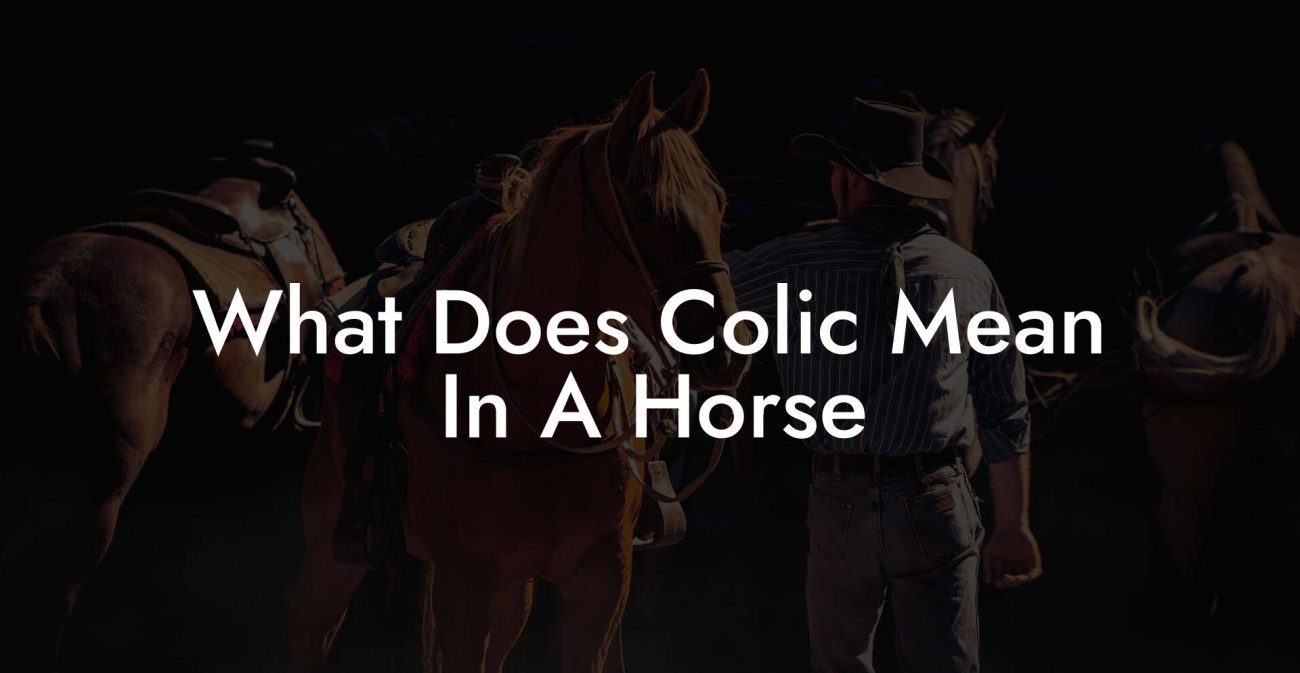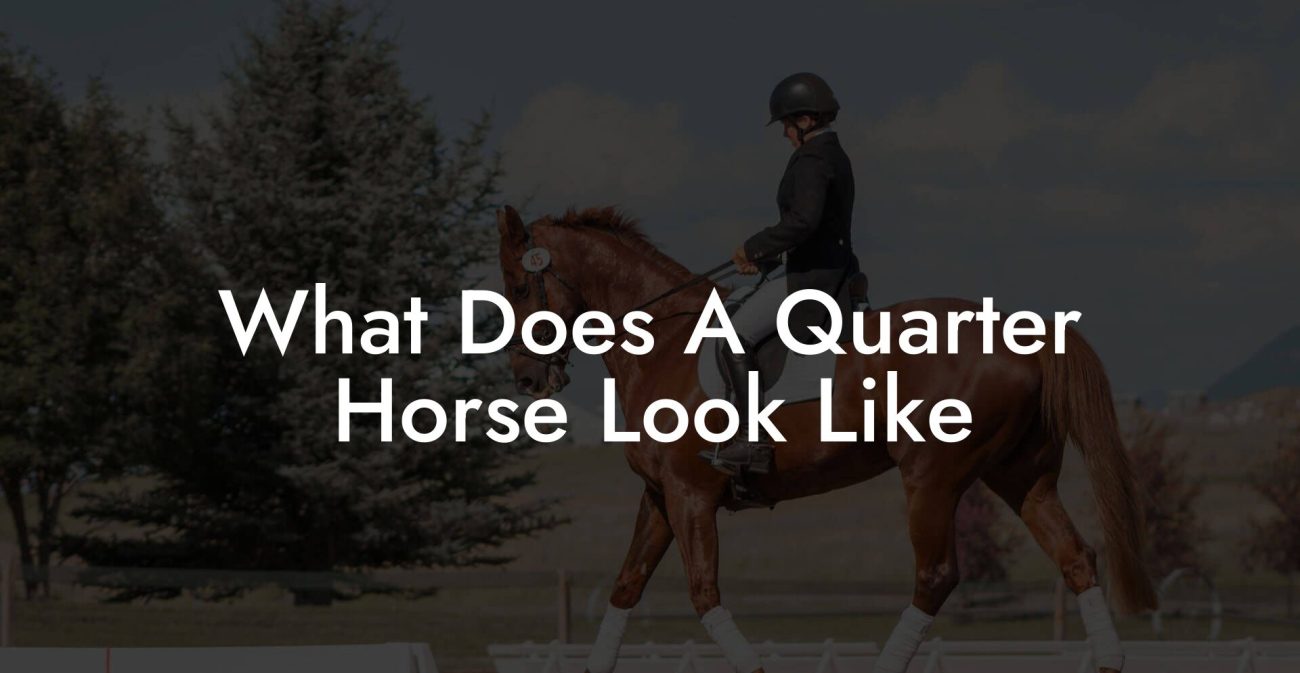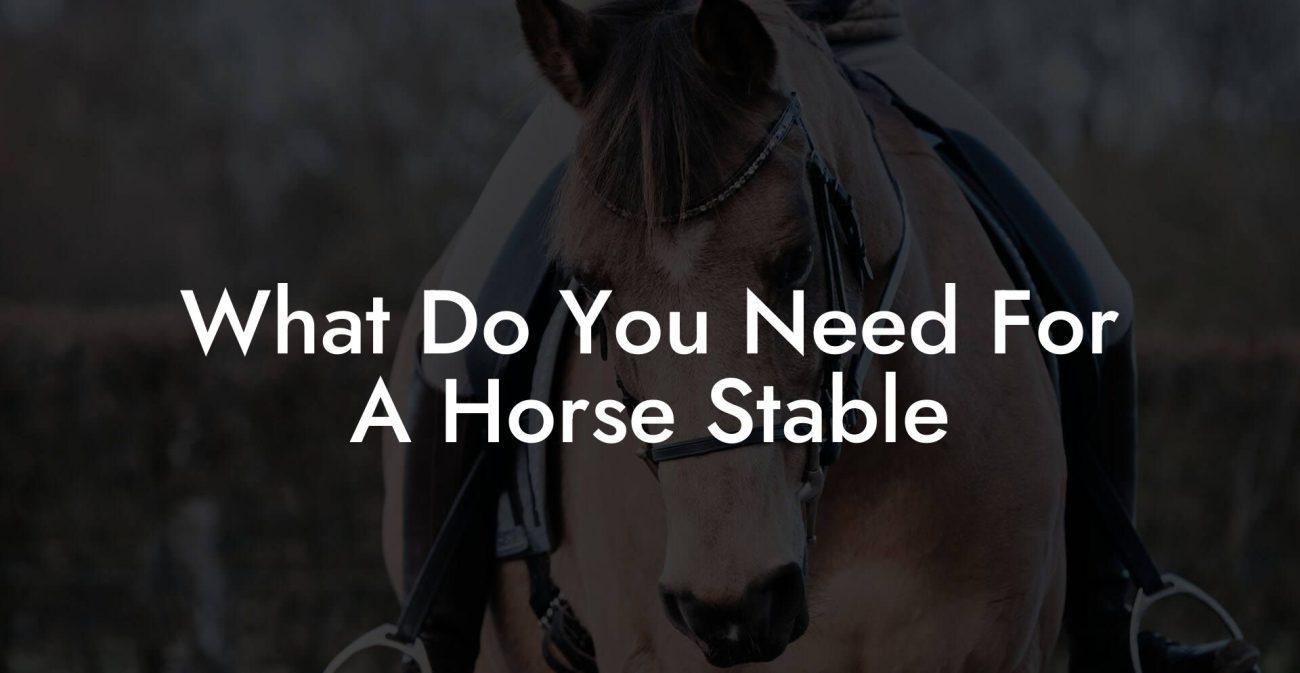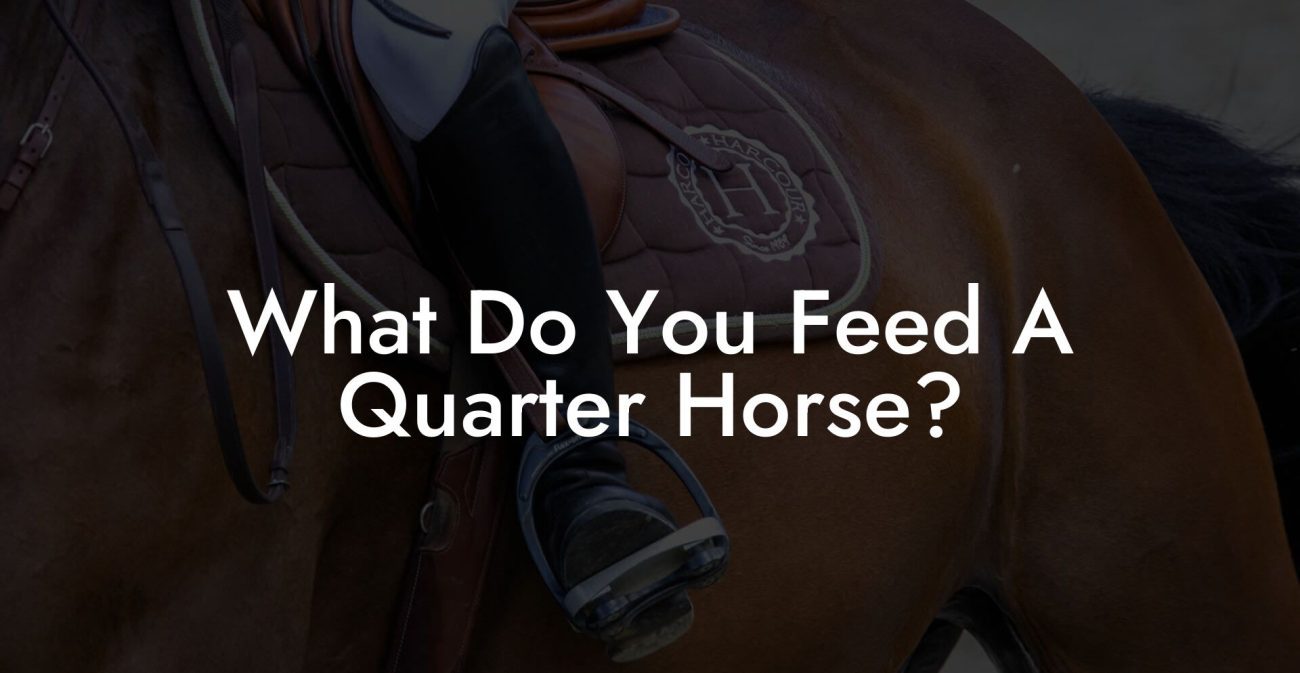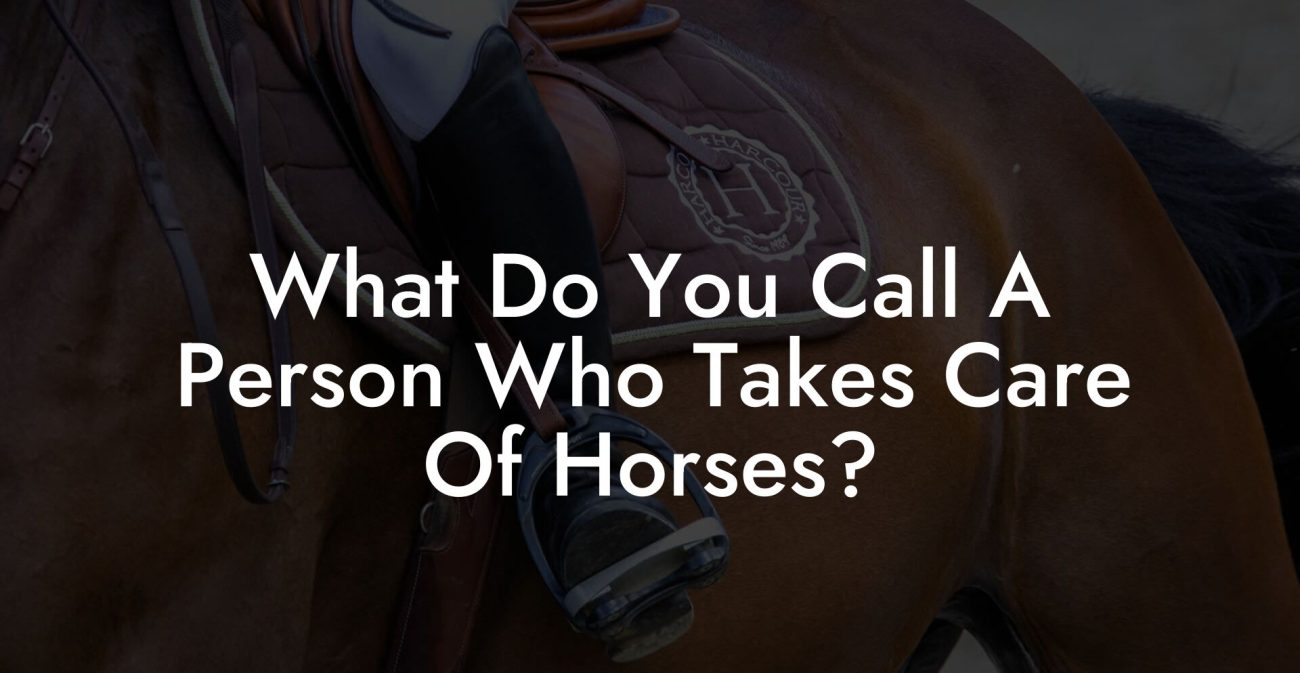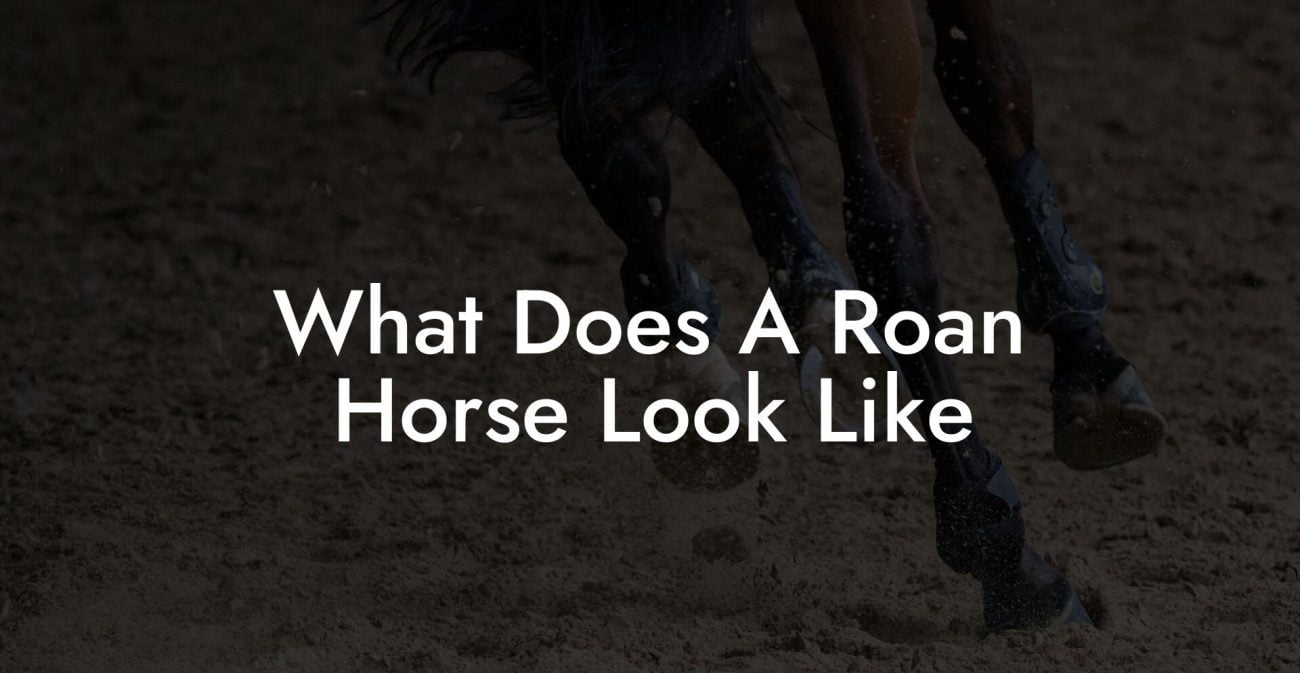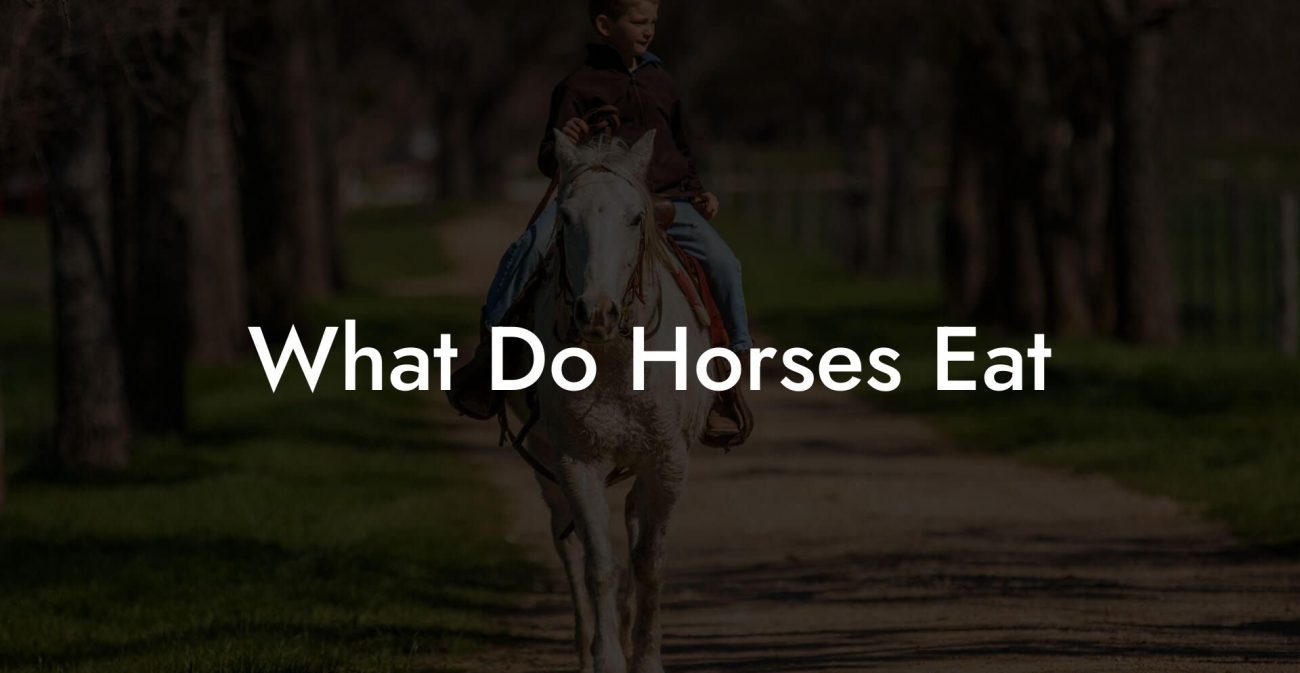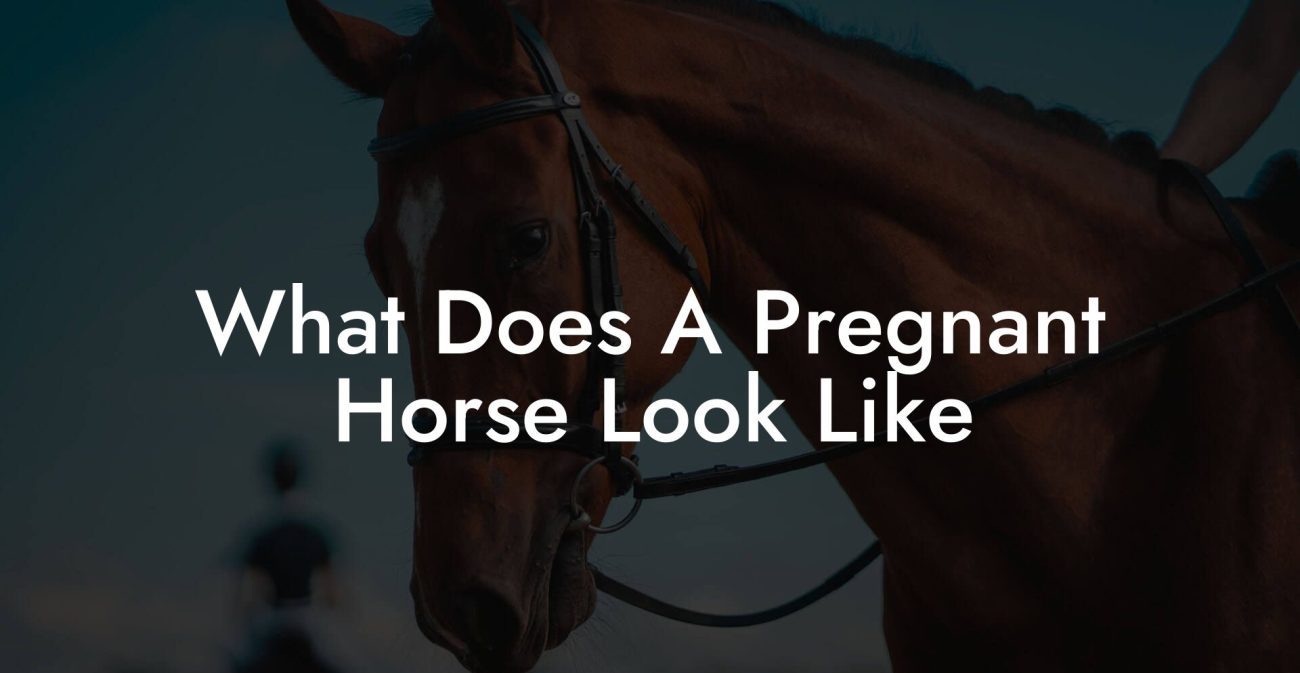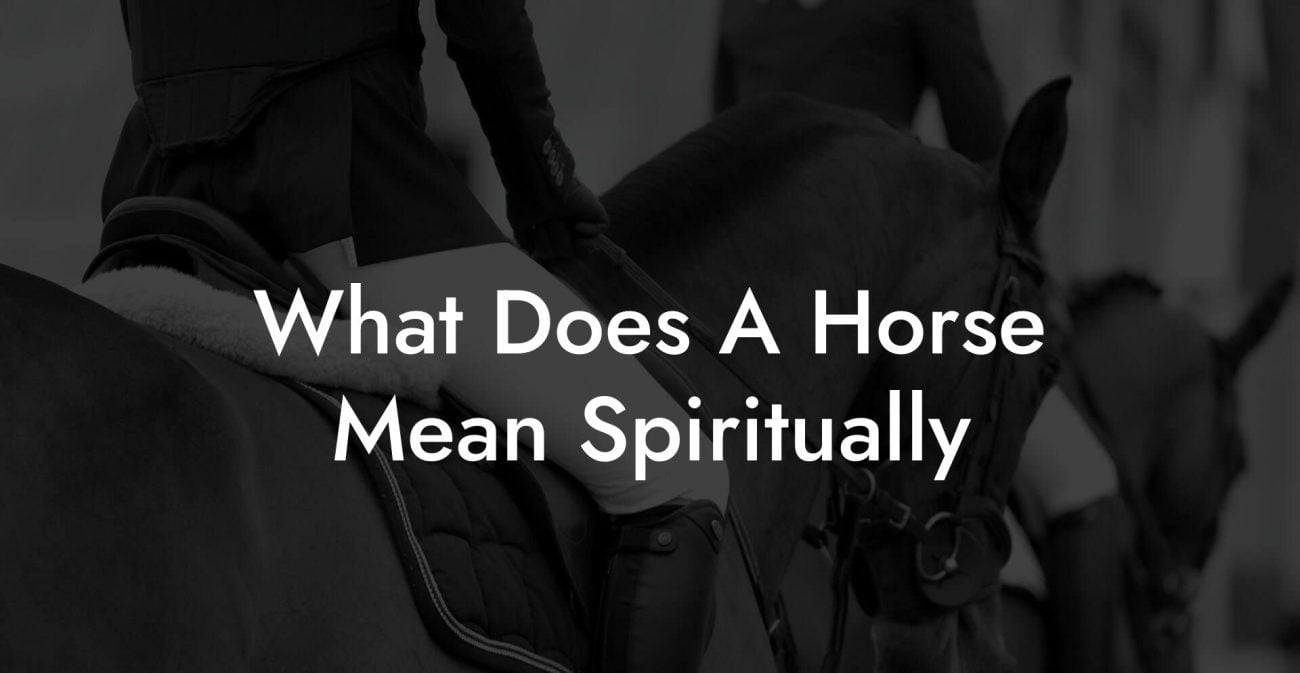Ever found yourself staring at your four-legged friend with a puzzled expression, wondering why he’s got that sluggish limp as if he’s just run a marathon in flip-flops? You’re not alone. Treating a lame horse can feel like embarking on a quirky journey through a barnyard self-help book, equal parts frustrating and oddly satisfying. Whether you’re a first-time equine owner or a seasoned rider who thinks “lame” is just another twist in a buddy comedy, this guide has the lowdown on reviving your horse’s swagger. Get ready to dive into everything from diagnosing the hitch in his step to mixing modern vet techniques with some good old-fashioned hoof care. Welcome to the ultimate playbook on how to treat a lame horse!
Quick Links to Useful Sections
- What Does It Mean When a Horse Is Lame?
- Understanding the Common Causes of Lameness
- Recognizing the Signs: Is Your Horse Really Lame?
- Veterinary Intervention: Conventional Treatments for a Lame Horse
- Thorough Veterinary Assessment
- Medications and Pain Management
- Rest and Controlled Exercise
- Surgical Interventions
- Complementary and Alternative Therapies: Going Beyond the Ordinary
- Equine Physio and Rehabilitation
- Chiropractic Adjustments
- Acupuncture for Equines
- Herbal Remedies and Nutritional Supplements
- Integrating Rehabilitation: Crafting a Comprehensive Recovery Plan
- Step 1: Detailed Veterinary and Diagnostic Assessment
- Step 2: Develop a Multi-Pronged Treatment Strategy
- Step 3: Regular Monitoring and Adjustments
- Step 4: Home Care and Environmental Adjustments
- Step 5: Patience, Persistence, and Positive Vibes
- Feeding and nutrition: Fueling Your Horse’s Comeback
- Key Nutritional Components
- Integrating Supplements
- Preventive Care: Keeping Your Horse On the Right Track
- Regular Hoof Care
- Smart Training Practices
- Regular Health Screenings
- Case Studies: Real-Life Transformations in Equine Recovery
- Case Study 1: The Comeback Kid
- Case Study 2: Overcoming Laminitis
- Case Study 3: Young Colt’s Triumph
- Resources and Community Support: Your Next Steps
- Equine First Aid: Quick Tips for Immediate Relief
- Step 1: Assess and Isolate
- Step 2: Apply Cold Therapy
- Step 3: Gentle Massage
- Step 4: Limit Exercise
- FAQ: Your Questions on How To Treat A Lame Horse Answered
- Your Journey to a Happy, Healthy Horse
What Does It Mean When a Horse Is Lame?
Lameness in horses isn’t just a fancy term that veterinarians throw around, it’s an umbrella phrase for any abnormal gait or difficulty in movement that often points to pain or injury. In essence, if your horse looks like he’s reluctantly tiptoeing through his pasture, there's a good chance he’s battling some underlying issues. From subtle stiffness to outright limping, recognizing lameness early is key to a speedy recovery.
The term “lame” might bring to mind images of a dramatic horse trotting with exaggerated caution, but in reality, it covers a spectrum of issues. Mild lameness might signal minor soreness or overuse, while severe cases could indicate structural damage, inflammation, or even conditions like laminitis. For every horse owner, understanding what lameness means, why it happens, and how to address it is essential in providing the best care for these majestic creatures.
In the bedlam of barnyard life, your horse is not just a beast of burden but also a treasured companion. Treating his lameness means donating time, patience, and sometimes a dash of creativity to bring him back to his trotting best.
Understanding the Common Causes of Lameness
Before you can whip up the perfect recovery plan, it’s crucial to pinpoint the causes of lameness. Just like a Gen-Z meme goes viral because it resonates with the audience, there are several common reasons why your horse might be limping, each with its own story and solution.
Here’s a rundown of the usual suspects:
- Hoof Problems: Cracked heels, abscesses, or defective shoeing can wreak havoc on a horse’s mobility. Just as you wouldn’t wear shoes that pinch your toes, a horse with ill-fitting or damaged horseshoes is bound to have issues.
- Soft Tissue Injuries: Sprains, strains, and tendon injuries are typical culprits. Overexertion during training sessions or accidental slips can lead to muscle damage that makes every trot a test of endurance.
- Joint Issues and Arthritis: Age or repetitive stress can cause joint inflammation and arthritis. Much like back pain from too many hours hunched over your laptop, joint issues can drastically affect your horse’s performance and comfort.
- Laminitis: A painful inflammation of the laminae (the tissue structures in the hoof) that can be triggered by metabolic disturbances, high-grain diets, or systemic illness.
- Injuries and Fractures: Trauma from accidents, falls, or kicks from other horses can lead to fractures or severe joint injuries, requiring urgent vet intervention.
- Nerve Damage: Nerve issues could also play a role in a horse's lameness, disrupting the signals required for smooth movement.
Knowing the root cause is your first step in creating a targeted treatment plan, ensuring that you're not just putting a bandage on a bullet but addressing the real problem.
Recognizing the Signs: Is Your Horse Really Lame?
It’s easy to miss subtle signs when your horse has been your daily companion for years, but being attentive to his gait and behavior can save him from prolonged discomfort. Some key indicators include:
- Irregular Gait: Noticeable limping, favoring one leg, or a stiff step are loud screams from your horse’s body that something isn’t right.
- Behavioral Changes: A normally peppy horse might become unusually quiet, reluctant to move, or even moody. A depressed mood isn’t just for your friend who didn’t get avocado toast, it could be your horse signaling pain.
- Swelling and Heat: Areas that feel warm to the touch or visibly swollen can indicate underlying inflammation or injury.
- Pain Response: A sensitive response when you touch a specific area of his leg might point to an injury or tender spot.
- Changes in Performance: If your ride has lost its former sparkle and your horse isn't as lively during training, lameness might be sabotaging his performance.
Observing these signs early not only prevents further damage but also makes targeted treatment more effective. In the world of equine care, as in social media trends, timing is everything.
Veterinary Intervention: Conventional Treatments for a Lame Horse
When it comes to treating a lame horse, your veterinarian is your frontline warrior. Conventional treatments rely on tried-and-tested methods that directly address the source of pain and promote healing. Here’s an overview of what you might expect:
Thorough Veterinary Assessment
The journey begins with a complete examination. Your vet will observe your horse’s gait, perform a physical exam, and may recommend imaging tests like X-rays, ultrasounds, or even MRI scans. This diagnostic phase is crucial in identifying the extent and precise location of the injury.
Medications and Pain Management
Pain management is paramount. Non-steroidal anti-inflammatory drugs (NSAIDs) such as phenylbutazone, coupled with other pain relievers, can help ease discomfort and reduce inflammation. In some cases, corticosteroids may be administered to control severe inflammation, though these treatments require careful monitoring.
Rest and Controlled Exercise
Just as you wouldn’t run a marathon with a sprained ankle, your horse needs ample rest. Controlled exercise routines might be introduced gradually to promote circulation and maintain muscle tone without exacerbating the injury. Stall rest might be recommended initially, followed by short, deliberate hand-walking sessions.
Surgical Interventions
In more severe instances, such as complex fractures or deep tissue injuries, surgery may be the only viable route to recovery. While the idea of equine surgery may sound intimidating, modern surgical techniques have greatly improved outcomes, letting horses trot away with renewed vigor.
Conventional treatments form the backbone of equine lameness management, providing immediate relief and setting the stage for further rehabilitative techniques.
Complementary and Alternative Therapies: Going Beyond the Ordinary
If conventional treatment is the practical, “get-it-done” approach, then complementary therapies are like adding avocado to your toast, unexpected, tasty, and surprisingly effective when done right. These alternative treatments work hand-in-hoof with veterinary advice to address pain and stimulate healing in a more holistic way.
Equine Physio and Rehabilitation
Much like human physical therapy after an injury, equine physiotherapy focuses on restoring function and strength in a controlled manner. Activities may include hydrotherapy, massage techniques, and targeted stretching exercises designed to improve circulation, reduce muscle tension, and gently restore movement.
Chiropractic Adjustments
Believe it or not, horses can benefit from chiropractic care too! Chiropractic adjustments focus on aligning the spine and joints, helping to relieve discomfort and restore balance. For a horse, these adjustments can improve overall mobility and reduce the stress that might contribute to lameness.
Acupuncture for Equines
Acupuncture isn’t just a human wellness craze; many horses have found relief through this ancient practice. By stimulating specific points along the body, acupuncture can help redistribute blood flow, relieve pain, and promote healing. Consider it the equine version of finding your Zen during a hectic day.
Herbal Remedies and Nutritional Supplements
Nature often holds the key to many healing secrets. Herbal treatments, from turmeric to boswellia, are sometimes used to combat inflammation in horses. Likewise, nutritional supplements, rich in omega-3 fatty acids and antioxidants, can support joint health and muscle recovery. These remedies should always be administered under the guidance of a veterinarian or equine nutritionist.
Incorporating these complementary methods along with conventional treatment provides a well-rounded approach to healing, a sure way to help your horse win back his lost stride.
Integrating Rehabilitation: Crafting a Comprehensive Recovery Plan
The secret sauce to treating a lame horse lies in a multi-faceted recovery plan that combines the best of modern veterinary practices with alternative therapies and practical home care. Creating a customized rehabilitation plan ensures every aspect of your horse’s health is addressed and maximizes his chances of a full recovery.
Step 1: Detailed Veterinary and Diagnostic Assessment
The journey starts with a comprehensive exam. Your veterinarian will conduct a full physical exam, possibly supplemented by imaging diagnostics such as X-rays or ultrasounds. This baseline assessment not only pinpoints the exact source of lameness but also rules out underlying issues that may require surgery or specialized therapy.
Step 2: Develop a Multi-Pronged Treatment Strategy
Based on the diagnosis, a detailed treatment strategy is crafted. This plan might include:
- Medical Interventions: Pain management with NSAIDs or corticosteroids to reduce inflammation and alleviate discomfort.
- Controlled Exercise Regimens: Scheduled periods of stall rest followed by tailored exercise programs to maintain muscle tone and encourage healing.
- Complementary Therapies: Incorporating physiotherapy, acupuncture, or chiropractic care to accelerate recovery.
- Nutritional Support: Adjusting your horse’s diet to include anti-inflammatory foods, supplements, and proper hydration to boost tissue repair.
Step 3: Regular Monitoring and Adjustments
Recovery is not a “set it and forget it” process. Continuously monitor your horse’s response to treatment, document improvements, and adjust the plan accordingly. This may involve revisiting your veterinarian for follow-up examinations or tweaking his exercise routine based on progress.
Step 4: Home Care and Environmental Adjustments
Creating a supportive environment at home is vital. Ensure that your horse’s living areas are free from hazards, smooth, even footing can prevent further injuries. Soft bedding, ample space, and limited access to overly rugged terrains give your horse the setting he needs to recover.
Step 5: Patience, Persistence, and Positive Vibes
Perhaps the most underrated element of a recovery plan is the undue power of positive energy, both yours and your horse’s. Celebrate small victories, invest in daily bonding time, and keep a steady, optimistic attitude. Recovery, much like a viral TikTok dance, requires practice, perseverance, and a willingness to adapt.
By blending medical expertise with innovative rehabilitation techniques, you create a holistic environment that not only heals but also strengthens the bond between you and your horse.
Feeding and nutrition: Fueling Your Horse’s Comeback
Just like you wouldn’t survive on instant noodles alone (though, let’s be honest, we sometimes do), your horse also benefits from a balanced, nutrient-rich diet. Nutrition plays a starring role in healing, supporting everything from muscle repair to immune system function. Feeding your horse the right balance of vitamins, minerals, and proteins can accelerate his recovery process by reducing inflammation and building strong tissues.
Key Nutritional Components
Here are some nutritional dos and don’ts for your equine friend:
- Forage First: High-quality hay and pasture provide the fiber necessary for digestive health and help maintain a stable energy level.
- Grains in Moderation: While grains are a source of quick energy, over-indulgence can lead to metabolic issues that may worsen inflammation.
- Essential Vitamins and Minerals: Supplements with vitamins D, E, and selenium support muscle function and contribute to overall vitality.
- Omega-3 Fatty Acids: Known for their anti-inflammatory properties, these can be sourced from flaxseed or specially formulated equine supplements.
- Hydration: Fresh, clean water should always be available; adequate hydration is crucial for tissue repair and overall metabolism.
Tailoring the diet to your horse’s specific needs, with input from an equine nutritionist or veterinarian, ensures that every bite contributes positively to his recovery.
Integrating Supplements
In cases where natural food sources might fall short, supplements can be a game-changer in managing inflammation and easing the strain on his joints and muscles. Always consult with a veterinary professional before introducing new supplements, but ingredients like turmeric, omega-3 oils, and glucosamine derivatives often make the cut for equine recovery.
Preventive Care: Keeping Your Horse On the Right Track
Prevention is better than cure, and in the equine world, a little forethought can keep your horse prancing with confidence. Staying ahead of lameness involves regular checkups, proper hoof care, and smart training routines.
Regular Hoof Care
Farriers aren’t just for show; regular hoof trimming and corrective shoeing can stave off many hoof-related issues that lead to lameness. Consistent farrier visits help align your horse’s hooves, ensuring even weight distribution and preventing undue stress on his legs.
Smart Training Practices
Whether you’re gearing up for a polo match or simply riding in the countryside, incorporating warm-up exercises, stretching, and cool-down routines can be the difference between a healthy horse and one prone to injuries. Listen closely to your horse’s signals and adapt his training intensity to avoid overuse.
Regular Health Screenings
Keep a close relationship with your veterinarian by scheduling regular health screenings. Early detection of joint or muscular issues can mean the difference between a minor inconvenience and a major veterinary emergency.
Preventive care means investing time and energy upfront to protect your horse from future bouts of lameness, making sure he remains a vibrant, energetic partner in all of your adventures.
Case Studies: Real-Life Transformations in Equine Recovery
The best way to appreciate the power of a well-rounded treatment plan is to hear real-life success stories from the barnyard. Here are a few case studies that demonstrate how different approaches can revive a lame horse’s zest for life:
Case Study 1: The Comeback Kid
Bella, a sprightly mare with a penchant for dashing across open fields, suddenly began showing signs of subtle lameness. After a thorough veterinary examination revealed a minor tendon strain, her owner implemented a recovery regime that blended medication with controlled exercise and physiotherapy sessions. By introducing weekly acupuncture treatments and customizing her diet for enhanced joint support, Bella gradually regained her former spark. Within a few months, she was back to her long, graceful trots, proving that even setbacks can be turned into comebacks with the right plan.
Case Study 2: Overcoming Laminitis
Rocky, a seasoned stallion, was diagnosed with laminitis, a condition notorious for its debilitating effects on hoof health. His treatment plan was intensive: combined anti-inflammatory medications, strict dietary changes, and regular farrier visits to manage his hoof alignment. Alongside the conventional methods, the owner introduced hydrotherapy sessions, letting Rocky enjoy cool water walks that alleviated the inflammation. While the road was rocky (pun intended), after several months of diligent care, Rocky’s condition stabilized, allowing him to return to a more comfortable, pain-free trot.
Case Study 3: Young Colt’s Triumph
A young colt named Dash suddenly developed a mild limp after an enthusiastic play session in the paddock. His owner quickly consulted a veterinarian and incorporated complementary therapies, everything from chiropractic adjustments to a modified exercise regimen. Paying extra attention to his nutritional needs, the owner added omega-3 supplements and herbal anti-inflammatories to his diet. Dash’s recovery was swift and impressive, a testament to the effectiveness of blending conventional and alternative treatments in restoring vitality.
These case studies are proof that with a personalized, integrative approach, every horse can rediscover his strength and stride, turning a lame step into a confident gallop.
Resources and Community Support: Your Next Steps
Navigating the complexities of equine care might sometimes feel like reading through an endless thread of TikTok tutorials. Luckily, the internet is awash with vibrant communities, expert advice, and valuable resources that can help guide you every step of the way. Whether you’re looking for an experienced equine veterinarian, specialized farriers, or online forums filled with fellow horse enthusiasts, connecting with experts and peers can offer you the support you need.
Consider joining online groups on platforms like Facebook, Reddit, or even dedicated equine wellness websites where anecdotes, advice, and updates on the latest treatments are shared. Additionally, local equine shows, clinics, and barn tours often provide hands-on workshops that can broaden your knowledge about preventing and treating lameness in horses.
Remember, your journey toward optimal equine health doesn’t have to be a solo ride. Sharing experiences, seeking guidance, and staying updated with the latest research empowers you to make informed decisions that will keep your horse trotting strong for years to come.
Equine First Aid: Quick Tips for Immediate Relief
There are times when you need to act fast. When your horse’s limping worsens suddenly, here are a few immediate measures you can take while waiting for professional care:
Step 1: Assess and Isolate
If you notice a sudden change in your horse’s gait, move him to a safe, quiet area where further injury is less likely. This isn’t the time for a high-energy turnout.
Step 2: Apply Cold Therapy
For acute inflammation or swelling, apply a cold compress to the affected area. Use a clean cloth soaked in cool water or an ice pack wrapped in a towel, never apply ice directly to the skin.
Step 3: Gentle Massage
A light massage can sometimes help stimulate circulation and reduce tension, but be cautious around areas that alert your horse to pain.
Step 4: Limit Exercise
While it might be tempting to encourage your horse to keep moving, limiting exercise can prevent further damage. Keep him confined to a small space with soft footing.
These tips serve as short-term relief measures. Always follow up with a professional evaluation to determine underlying issues.
FAQ: Your Questions on How To Treat A Lame Horse Answered
Below are answers to some of the most frequently asked questions from horse enthusiasts and owners looking to navigate the world of equine lameness treatment.
1. What is the most common cause of lameness in horses?
Lameness in horses commonly stems from hoof problems, soft tissue injuries, joint issues, or conditions like laminitis. A thorough veterinary exam is essential to diagnose the exact cause.
2. How soon should I consult a vet after noticing lameness?
Early intervention is critical. If you notice any changes in your horse’s gait or signs of discomfort, consult a veterinarian as soon as possible to prevent further injury.
3. Can I treat mild lameness at home?
For minor cases, rest, cold therapy, and a controlled exercise regimen are recommended initially. However, professional guidance is necessary to ensure it isn’t a symptom of a more severe issue.
4. What complementary therapies can help treat lameness?
Equine physiotherapy, chiropractic adjustments, and acupuncture can all serve as effective complementary therapies when combined with veterinary care.
5. How important is nutrition in the recovery process?
Nutrition is vital; a balanced diet rich in essential vitamins, omega-3 fatty acids, and minerals supports tissue repair and overall health, boosting your horse’s recovery process.
6. When is surgical intervention necessary?
Surgery may be required in cases of severe or complicated injuries that do not respond to conservative treatments. Your veterinarian will provide guidance based on imaging and clinical evaluation.
7. Can regular hoof care prevent lameness?
Absolutely. Routine hoof trimming and proper shoeing by an experienced farrier can prevent many lameness issues before they start.
8. What should I do if my horse’s lameness worsens despite treatment?
If you notice worsening symptoms, promptly consult your veterinarian, as adjustments to the treatment plan or further diagnostic tests may be necessary.
9. Are there any risks to using complementary therapies on horses?
Most complementary therapies are safe when administered by qualified professionals. Always consult with your vet to ensure that any additional therapy is compatible with your horse’s condition.
10. How can I stay updated on the latest equine care methods?
Join equine care communities, subscribe to veterinary newsletters, and follow credible websites dedicated to horse health for the most recent updates and expert advice.
Your Journey to a Happy, Healthy Horse
Caring for a lame horse is far more than merely addressing a physical limp, it’s an ongoing journey that encompasses veterinary science, alternative therapies, and above all, a deep, genuine bond between you and your equine companion. Every step you take to understand, diagnose, and treat his pain is a victory, a triumph of compassion over adversity.
Embrace the process with humor, perseverance, and an appetite for learning. Today’s advances in equine health mean that even if your horse is sidelined by lameness, there’s a well-lit path to recovery that combines modern veterinary techniques with the empowering support of holistic care. Whether through a well-coordinated rehabilitation program, a precisely balanced diet, or the community resources at your fingertips, turning around your horse’s health is within reach.
So, grab your toolkit, consult with professionals, and remember: every trot, canter, and gallop restored is a story of resilience, a celebration of determination, and the proof that sometimes a little extra care can transform a lame step into the dance of vitality. Your horse’s recovery is not just a testament to physical healing, but a shining example of how thoughtful, multi-layered care can bring out the best in your equine friend.
Step forward with confidence, may your days be filled with joyful trots, playful canters, and a bond that grows stronger with every healed stride. After all, treating a lame horse isn’t just about the cure, it’s about nurturing a companion who’ll carry you through life’s many adventures.


